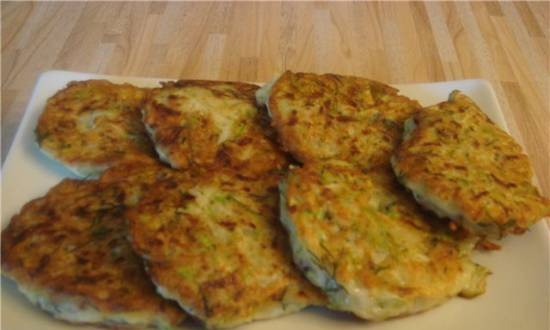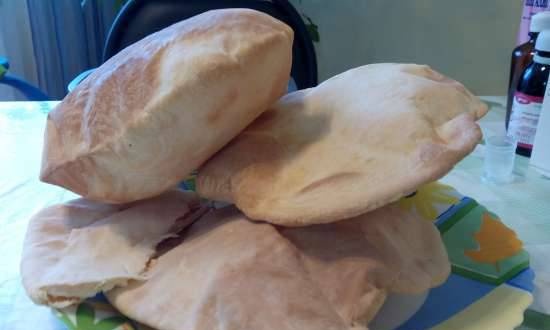A LITTLE ABOUT SHASHLIK 🔗.

Shish kebab is undoubtedly the very first dish that a person learned to cook. Our ancestors in ancient times learned how to cook food on fire and coals. But we do not think that they had the time and desire to conjure for a long time over a dead mammoth, horse or bear in order to give the animal's meat any extraordinary taste. Hundreds of centuries later, hunters and soldiers used to roast meat on ramrods from muskets and squeaks.
Many people who are unfamiliar with history have the idea that barbecue is some kind of special dish of the peoples of the Caucasus, peculiar only to them. This is completely wrong. Exactly the same shashlik can be found among many peoples of the world.
By the way, the word "shish kebab" itself is not of Caucasian origin and appeared in Russian by accident.
It makes no sense to look for a country where barbecue first appeared. Even ancient people, having learned how to make fire, ate meat cooked over the fire. But, nevertheless, it is generally accepted that the homeland of this dish is the East: Iran, Iraq, Lebanon, the Caucasus. ... Maybe it is thanks to the eastern traditions of cooking meat that this dish turned out to be so fragrant and juicy. Now almost any meat cooked on coals is called a shish kebab. But kebab is not just fried meat, it is a whole ritual with its own rules and prohibitions.
Shish kebab was known in Russia until the 18th century, but it was called "spit" - meat turned on a spit. "Royal dishes" of the XVI-XVII centuries mention "chickens, ducks, meat and hares." The very word "shashlik" is a distorted Crimean Tatar word "shish" - "spit", "shishlyk" - "something on a spit".

Barbecue - fragrant, juicy, charcoal-smelling meat with a glass of good dry wine. This dish, considered in Russia and throughout the world to be a typical Caucasian one, is familiar in general to many shepherd and cattle-breeding peoples, especially mountain ones. As for the name - shashlik, then, despite its undoubted Turkic origin, no one in the Caucasus, including Turkic-speaking Azerbaijan, can explain this word based on the vocabulary of their language.
In Armenia, shish kebab is called "khorovats", in Azerbaijan - "kebab", in Turkey - "shish-kebab". Kebab is a kind of cutlet with a lot of mint. All this mass is strung on wooden sticks and baked over coals. In the West and in America, "spun" dishes have turned into "flipped" - there it is customary to cook meat on a wire rack in braziers called "barbecues". In some parts of Africa, local aborigines make shish kebab from liver. In Georgia, "mtsvadi" is made for the most dear guests on a dry vine.Small pieces of meat on skewers are also common in Southeast Asia: Thailand, Malaysia, Indonesia, called satay.
There is a tradition of cooking barbecue in Latin America. In Brazil, for example, shish kebab is called shuraska. A huge piece of meat is strung on a skewer and cooked over an open fire. When the top layer is fried, it is cut into a plate with a large and very sharp knife.
In Japan, China, Indonesia, meat is put on skewers (sharp wooden sticks), deep-fried, then dipped in sauce and served. Although in Japan, seafood ("tempora") is primarily used for cooking kebabs. The Japanese cook on coals very rarely. They believe that charcoal has the ability to absorb odors, and when it is ignited, it transfers those odors to products. Therefore, the Japanese eat pickled ginger with a kebab cooked over an open fire - it repels off odors.
Small pieces of marinated lamb are cooked in many countries from Afghanistan to Morocco. In French-speaking North Africa they are called "brochettes". Since the countries are deserted, saxaul and boxwood are used for shashlik. Such coals are very hot and "long-lasting" with fragrant smoke.
In Korean cuisine, there is a dish called orikogikui (duck kebab). We advise you to cook it. Duck with spices, herbs and powdered sugar can be either roasted over the fire or baked in the oven. The meat should not be overcooked, as its taste disappears.

Unfortunately, what we usually cook on charcoal cannot be called a kebab, although everyone is happy and no one complains about the taste until they try a real kebab. But this is not just fried meat, it is a whole ritual with its own rules and prohibitions.
Shish kebab is the only dish for which you can gather at the table. The barbecue is accompanied only by fresh tomatoes, grilled vegetables, herbs, cheese, spices, green onions and dry wine. Nothing should interrupt the taste of barbecue, you need to enjoy it and only it, so there should be a lot of meat so that everyone has the opportunity to get a lot of pleasure.
So, you decided to pamper your dear guests with barbecue, so where to start cooking? First of all, you need to decide on the choice of meat or fish. We will not adhere to strict Caucasian traditions and talk about only mutton barbecue. Nowadays, thanks to freedom of morals, a modest budget or a rich assortment, barbecue can be made from meat, as well as from chicken and sturgeon, it is important that everything is fresh.
Lamb shish kebab is a very delicate matter, like the East itself. The lamb should be young and lean, it is best to take a young lamb up to 8 kilograms in weight. Excess fat must be cut off and the meat cut into small pieces. The onion is scrolled through a meat grinder and mixed with the meat so that the meat is soaked in onion juice. Onions in rings are not useful, despite their attractive appearance. Add salt and pepper to taste. Then the meat is mixed with real adjika (made only from tomatoes, peppers and spices) and marinated for 24 hours.
Alexander Dumas, who traveled around the Caucasus in 1858, assured that the lamb loin for barbecue was put in a marinade of vinegar, onion, salt and pepper for 15 minutes. And only to get an especially spicy dish, the meat was left in the marinade overnight.
Have you noticed that in the old days soaking in a marinade was not particularly valued? This is because they knew nothing about the carcasses that hung in the refrigerator for weeks and months, and there was no need to beat off the smell of decay.
And you can soak meat in anything. The classic folk ways - meat in vinegar or wine - aren't particularly good. Vinegar, while softening the meat, kills its natural taste. The same, however, as well as wine.
Crimean Tatars prefer sour milk, and you can also use table soda water. Today it is convenient to use mayonnaise, ketchup, beer, all kinds of juices - for example, pomegranate for these purposes. And the Australians generally soak their shish kebab in strong tea.You need to string the pieces tightly to each other. And now the coals are ready and the tender pink pieces are blushing in the heat

Now let's return to the more native meat and try to make pork shashlik - for this it is better to take a ham, and for special delicatessen we recommend pork ribs. The technology is no different from cooking lamb shashlik. The ribs are cut in pairs. When strung on skewers in the ribs, the pulp is pierced between the bones.
Many also believe that beef can make a great shish kebab. But it should not be forgotten that beef is much tougher than pork. Therefore, it is advisable to pre-soak the beef in carbonated water. And the cooking recipe remains the same. The kebab should be juicy, aromatic, and, most importantly, soft.
Dry red wines should be served with meat kebabs. In no case should you eat barbecue with vodka or beer. Wine should be served at room temperature. Red wines do not cool even in the heat.
Poultry kebab is also a worthy dish. You can use fillets, or you can chop the whole bird into even small pieces. For the marinade, use the same sauce as before. Chicken should be marinated longer than pork. After that, all that remains is to enjoy the delicate taste and aroma of a wonderful barbecue.
You need to drink poultry kebabs only with dry white wine. It especially emphasizes the taste of these dishes. At the same time, white wines should be served chilled both in winter and summer. Unlike red wine, white wine is very light, so you need to stock up on enough for everyone.
All snacks should emphasize the taste of the barbecue favorably and be combined with it. It should be borne in mind that you have only one main dish on our table - shashlik, on which you need to concentrate, therefore, light snacks should only whet your appetite, and not distract from endless pleasure.

There is such a castle in Hungary - in the city of Szekesfehervar. One and only person - at the same time a sculptor, architect and artist with his own hands for two decades, built this Castle and filled it with beautiful statues and paintings dedicated to the one and only queen of his heart - his wife.
They say she knew how, like no one else, to cook a robber roast, delicious dish! It looks like a Caucasian shish kebab and is also cooked on a spit, only stringed on a skewer: rye bread, meat, smoked bacon (of course, with spices and wine!), And again in the same order, ending the skewer with bread. Robbery hot and now, they say, local chefs treat tourists visiting the Castle of Love.
Kebab is not just meat on a stick. This phenomenon is not only culinary, but also aesthetic. And an important addition to this dish is the surrounding landscape.













